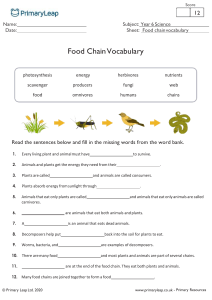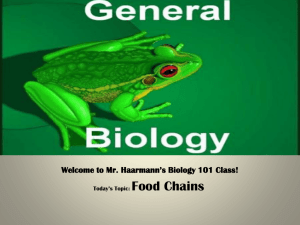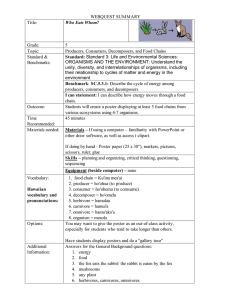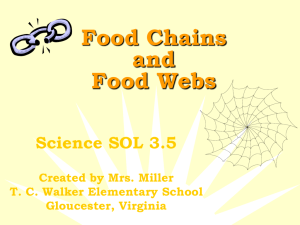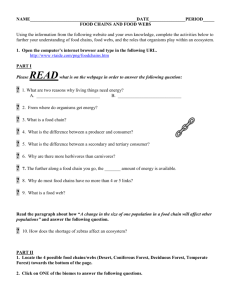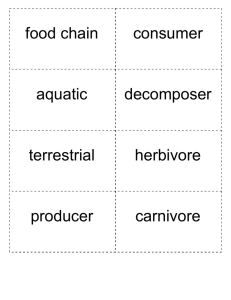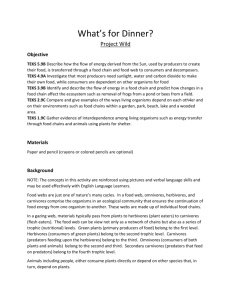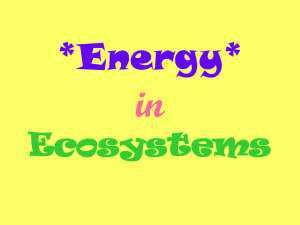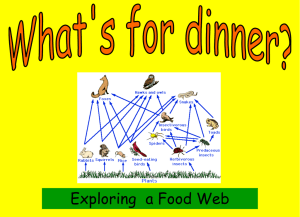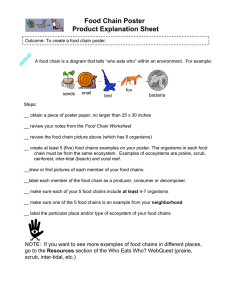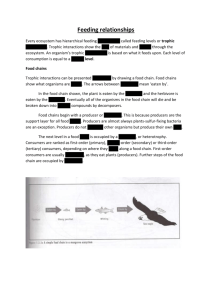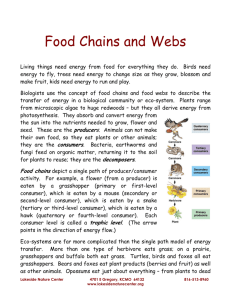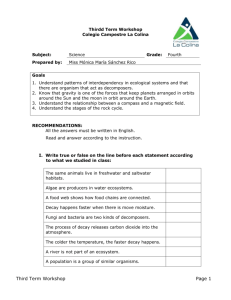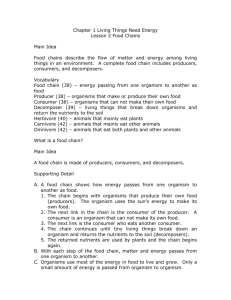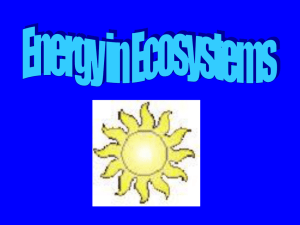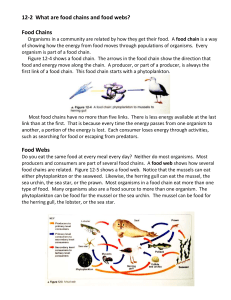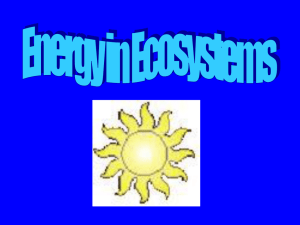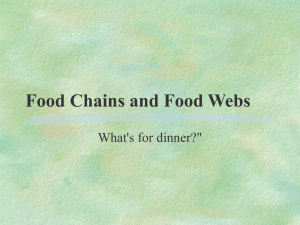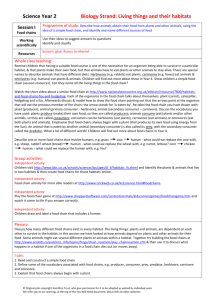Food Chains
advertisement
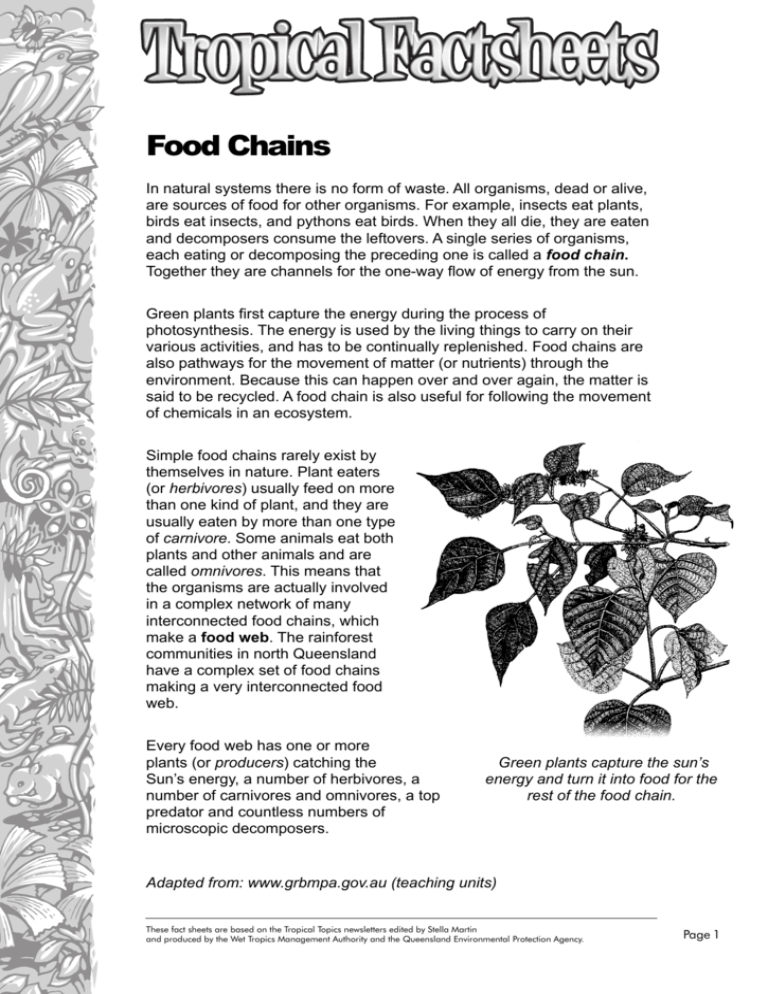
Food Chains In natural systems there is no form of waste. All organisms, dead or alive, are sources of food for other organisms. For example, insects eat plants, birds eat insects, and pythons eat birds. When they all die, they are eaten and decomposers consume the leftovers. A single series of organisms, each eating or decomposing the preceding one is called a food chain. Together they are channels for the one-way flow of energy from the sun. Green plants first capture the energy during the process of photosynthesis. The energy is used by the living things to carry on their various activities, and has to be continually replenished. Food chains are also pathways for the movement of matter (or nutrients) through the environment. Because this can happen over and over again, the matter is said to be recycled. A food chain is also useful for following the movement of chemicals in an ecosystem. Simple food chains rarely exist by themselves in nature. Plant eaters (or herbivores) usually feed on more than one kind of plant, and they are usually eaten by more than one type of carnivore. Some animals eat both plants and other animals and are called omnivores. This means that the organisms are actually involved in a complex network of many interconnected food chains, which make a food web. The rainforest communities in north Queensland have a complex set of food chains making a very interconnected food web. Every food web has one or more plants (or producers) catching the Sun’s energy, a number of herbivores, a number of carnivores and omnivores, a top predator and countless numbers of microscopic decomposers. Green plants capture the sun’s energy and turn it into food for the rest of the food chain. Adapted from: www.grbmpa.gov.au (teaching units) These fact sheets are based on the Tropical Topics newsletters edited by Stella Martin and produced by the Wet Tropics Management Authority and the Queensland Environmental Protection Agency. Page 1
